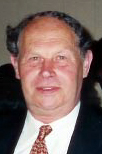Editor’s Note: Our Australia bureau chief, Garry Fabian, recently received the following request from the city of Stuttgart, Germany: ” “On the 22nd August this year there will be the 70th anniversary of this very sad moment in Stuttgart (Germany) history. We are planning to commemorate this date when transport of Jewish citizens were commenced that saw the deportation of more than 900 Jews from Stuttgart. You are one of the very few persons still alive who were deported from Stuttgart North Station. We would very much appreciate if you could send us a note,some personal statement or whatever you think would be appropriate from your perspective to be read on the occasion.” Following is Fabian’s response:
By Garry Fabian

MELBOURNE, Australia –In our fast moving world, something that happened 70 years ago appears very much in the distant past and in many cases is regarded as an almost irrelevant footnote to history.
But to those of us who were actually present when this event took place, and were a part of it, it is still very much alive in our memories. It impacted us for the rest of our lives over the last seven decades.
One such event, while perhaps just one small example of the madness that possessed the world over the 12 years of Germany’s dark days of Nazism, was the beginning of the deportations of German Jewish citizens of Baden-Wurtenberg, who had been part of the community for hundreds of years. The first deportation trains left on 22nd August 1942 from Stuttgart North Station.
The three waves of deportations continued over many months. The first two went to destinations where all on the trains were killed on arrival, and the third wave went to the Theresienstadt ghetto, where a small handful managed to survive. This is indeed a dark chapter of the story of how fellow citizens were treated during 1933 – 1945, in a city that otherwise was always known for its tolerance and liberal lifestyle
The names inscribed on the memorial erected at the site bear testimony to all those who perished and serve to remind the world of the inhumanity of persecution of those whose only “failing” was that they were Jewish.
While their names are recorded on the monument, the events are still alive in the minds of a handful of those who survived the horrors of the era, and were able to build new lives in many parts of the world. I have been fortunate to be one of the few who were given the gift of life, and to keep the memory of these events, and to honour the memory of those who perished. For it has been said, that if we do not remember the victims, they are destined to be killed twice.
While seven decades may have elapsed from the original event, it was still full of being a very real, and in many ways, highly emotionally charged, experience.
If there is to be a meaningful message from the ceremony of remembrance, it is one that we must never forget the past, but also that it important to build a bridge from the terrible events of the past to a better future, where it hopefully can never again happen.
Garry (Gerhard) Fabian
Melbourne, Australia